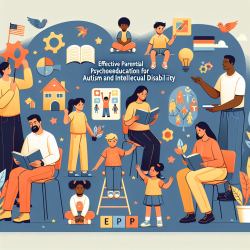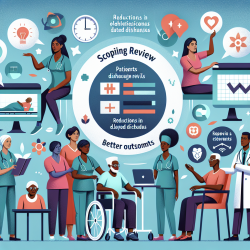Introduction
The prevalence of brain infarcts and their association with cognitive performance in individuals living in marginal housing is a critical area of research that can significantly impact clinical practice. The study titled "Prevalence and Risk Factors of Brain Infarcts and Associations With Cognitive Performance in Tenants of Marginal Housing" by Zhou et al. provides valuable insights into the health challenges faced by this vulnerable population. As practitioners, understanding these findings can enhance our ability to deliver effective interventions and advocate for necessary community services.
Key Findings from the Research
The study assessed 228 participants residing in marginal housing, revealing a high prevalence of brain infarcts (11%), predominantly ischemic in nature. Notably, these infarcts were largely "silent," with 92% of affected individuals unaware of their condition. Despite a lower prevalence of conventional vascular risk factors, such as hypertension and diabetes, the cohort exhibited high rates of tobacco use (94%). The study identified age as a significant predictor of brain infarcts, while cognitive assessments indicated impaired decision-making abilities among those with infarcts.
Implications for Practitioners
For practitioners working with individuals in marginal housing, these findings underscore the importance of comprehensive assessments that go beyond traditional risk factors. Here are some actionable steps practitioners can take:
- Advocate for Neuroimaging: Given the high prevalence of silent brain infarcts, practitioners should advocate for routine neuroimaging to identify at-risk individuals early.
- Focus on Cognitive Assessments: Incorporate cognitive testing, particularly for decision-making abilities, to tailor interventions that address specific deficits.
- Promote Preventative Strategies: Encourage lifestyle modifications, such as smoking cessation, and facilitate access to preventative healthcare services.
- Collaborate with Community Services: Work with housing and community organizations to ensure individuals have access to stable housing and healthcare resources.
Encouraging Further Research
The study by Zhou et al. highlights the need for further research to develop targeted interventions for individuals living in marginal housing. Practitioners can contribute to this effort by:
- Participating in Longitudinal Studies: Engage in research that tracks health outcomes over time to better understand the long-term effects of brain infarcts.
- Exploring Intervention Efficacy: Investigate the effectiveness of various intervention strategies to improve cognitive outcomes in this population.
- Collaborating with Researchers: Partner with academic institutions to conduct studies that address the unique needs of individuals in marginal housing.
Conclusion
Understanding the prevalence and impact of brain infarcts in individuals living in marginal housing is crucial for developing effective interventions. By leveraging the findings from Zhou et al.'s study, practitioners can enhance their skills and contribute to better health outcomes for this vulnerable population. To read the original research paper, please follow this link: Prevalence and Risk Factors of Brain Infarcts and Associations With Cognitive Performance in Tenants of Marginal Housing.










